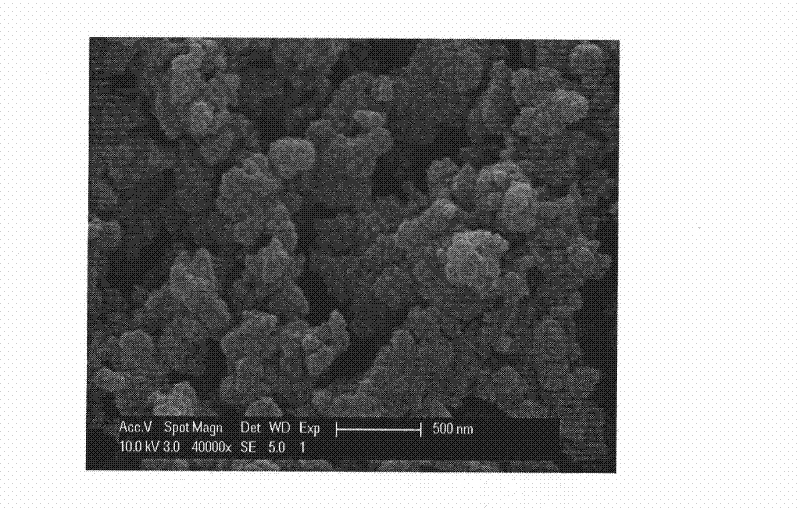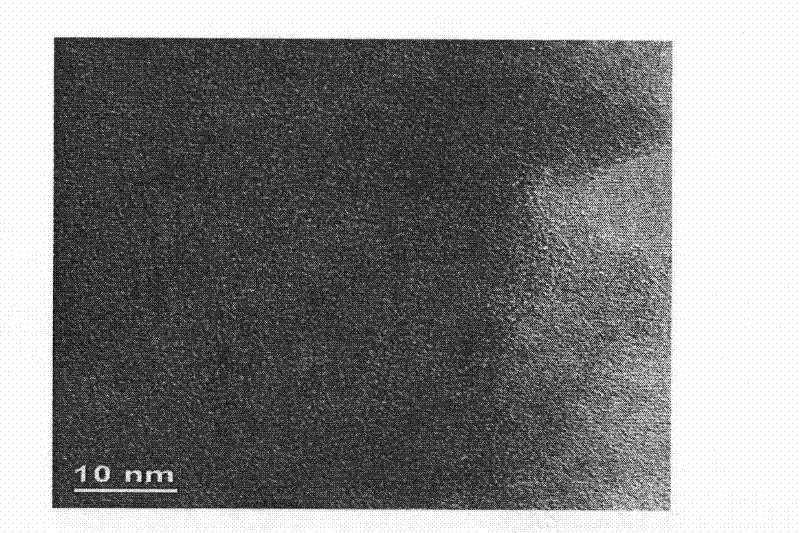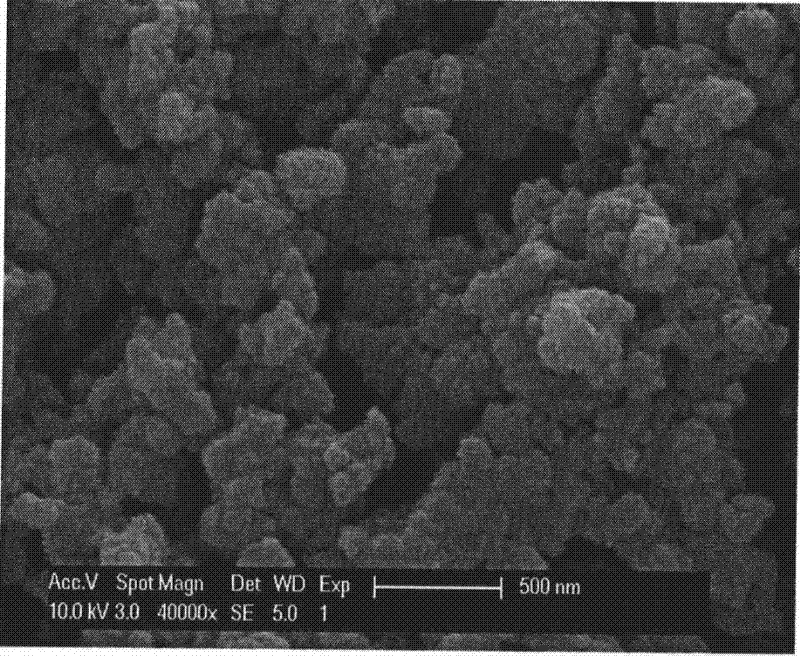Dedoped Polyaniline/Metal Oxide Hybrids
A hybrid, polyaniline technology, used in electrolytic capacitors, electrical components, circuits, etc., can solve problems such as difficult processing, no public reports on research, and achieve good oxidation/reduction reversibility.
- Summary
- Abstract
- Description
- Claims
- Application Information
AI Technical Summary
Problems solved by technology
Method used
Image
Examples
Embodiment 1
[0026] Put 1.2g of titanium sulfate in a reactor containing 80ml of deionized water and stir until completely dissolved; take 0.9ml of aniline and add it to the above salt solution; dissolved in 20ml of deionized water); followed by oxidative polymerization at 20°C for 6 hours without stirring, filtering, and washing the filter cake until neutral. Transfer the filter cake to a reactor, add 10w% ammonia water and stir at 20° C. for 24 hours; filter and wash the filter cake until neutral. Drying at 150° C. for 5 hours in an inert atmosphere to obtain a de-doped polyaniline / titanium oxide hybrid powder.
[0027] Energy spectrum analysis (EDS) proves that titanium, oxygen exists in the obtained product; FTIR (KBr) shows that there is a Ti-O-Ti bond (500cm -1 ~650cm -1 ). The content of titanium oxide in the hybrid is 15wt%-20wt%, and the two main thermogravimetric temperature ranges are: 400°C-450°C and 650°C-700°C. Electrochemical studies show that the hybrid is electrochemic...
Embodiment 2
[0029] Place 2.4g of titanium sulfate in a reactor containing 80ml of deionized water and stir until completely dissolved; take 0.9ml of aniline and add it to the above-mentioned salt solution; dissolved in 20ml of deionized water); followed by oxidative polymerization at 25°C for 3 hours without stirring, filtering, and washing the filter cake until neutral. Transfer the filter cake to a reactor, add 15 wt% ammonia water and stir at 25°C for 36 hours; filter and wash the filter cake until neutral. Drying for 3 hours under the condition of 180° C. in an inert atmosphere to obtain a de-doped polyaniline / titanium oxide hybrid powder.
[0030] Energy spectrum analysis (EDS) proves that titanium, oxygen exists in the obtained product; FTIR (KBr) shows that there is a Ti-O-Ti bond (500cm -1 ~650cm -1 ). The content of titanium oxide in the hybrid is 15wt%-20wt%, and the two main thermogravimetric temperature ranges are: 400°C-450°C and 650°C-700°C. Electrochemical studies show ...
Embodiment 3
[0032] Place 7.2g of titanium sulfate in a reactor containing 80ml of deionized water and stir until completely dissolved; take 0.9ml of aniline and add it to the above-mentioned salt solution; dissolved in 20ml deionized water); then oxidatively polymerized at 20°C for 9 hours without stirring, filtered, and the filter cake was washed until neutral. Transfer the filter cake to a reactor, add 20 wt% ammonia water and stir for 48 hours at 20° C.; filter and wash the filter cake until neutral. Drying for 2 hours under the condition of 180° C. in an inert atmosphere to obtain a de-doped polyaniline / titanium oxide hybrid powder.
[0033] Energy spectrum analysis (EDS) proves that titanium, oxygen exists in the obtained product; FTIR (KBr) shows that there is a Ti-O-Ti bond (500cm -1 ~650cm -1 ). The content of titanium oxide in the hybrid is 15wt%-20wt%, and the two main thermogravimetric temperature ranges are: 400°C-450°C and 650°C-700°C. Electrochemical studies show that th...
PUM
 Login to View More
Login to View More Abstract
Description
Claims
Application Information
 Login to View More
Login to View More - R&D
- Intellectual Property
- Life Sciences
- Materials
- Tech Scout
- Unparalleled Data Quality
- Higher Quality Content
- 60% Fewer Hallucinations
Browse by: Latest US Patents, China's latest patents, Technical Efficacy Thesaurus, Application Domain, Technology Topic, Popular Technical Reports.
© 2025 PatSnap. All rights reserved.Legal|Privacy policy|Modern Slavery Act Transparency Statement|Sitemap|About US| Contact US: help@patsnap.com



